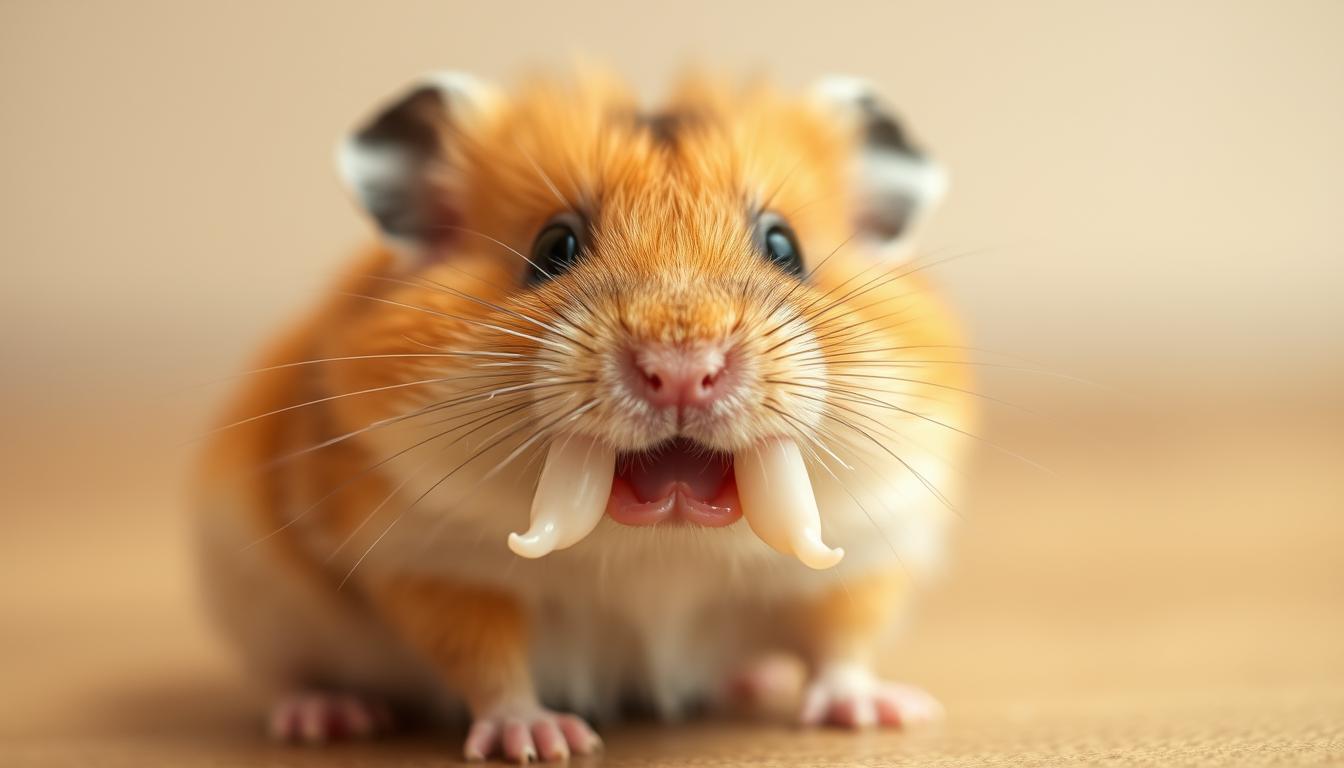Hamsters, those adorable little pocket pets, are known for their cheek pouches, their nocturnal antics, and their… teeth? We often focus on their fluffy fur and tiny paws, but their dental health is just as crucial to their well-being. Have you ever wondered about those continuously growing incisors? Can they actually fall out like our own teeth? It’s a valid question, and the answer is a bit more nuanced than a simple yes or no. This article will delve into the fascinating world of hamster teeth, exploring their composition, growth patterns, and the potential causes and consequences of tooth loss. So, grab a sunflower seed and settle in as we uncover the secrets of hamster dental care!
Hamster Teeth: The Big Question – Can They Fall Out?
The short answer is yes, a hamster’s teeth can fall out, but it’s not as common as it is with humans. Unlike us, hamsters don’t have baby teeth that are naturally replaced by permanent ones. Their teeth are designed to grow continuously throughout their lives. So, the loss of a tooth is usually due to an underlying issue, such as trauma, infection, or age-related problems. It’s not a natural part of their development.
Think of it like this: a hamster’s teeth are like tiny little plants that are constantly sprouting. They need to be worn down by gnawing and chewing to stay at the appropriate length. If something interferes with this process, or if the "plant" itself is damaged, it can lead to problems, including the potential loss of a tooth. It’s important to be aware of the factors that can contribute to tooth loss so you can take preventative measures and ensure your furry friend maintains good dental health.
Losing a tooth can be a significant issue for a hamster, as it directly impacts their ability to eat and groom themselves. These activities are essential for their survival and overall well-being. A hamster with a missing tooth might struggle to break down food, leading to malnutrition or weight loss. They might also find it difficult to groom themselves effectively, which can lead to skin problems and infections.
Therefore, it’s crucial to be vigilant about your hamster’s dental health and to seek veterinary attention if you notice any signs of tooth loss or other dental problems. Early detection and treatment can often prevent further complications and ensure your hamster enjoys a happy and healthy life. Keep an eye out for any changes in their eating habits, grooming behavior, or general demeanor, as these can be indicators of underlying dental issues.
Remember, a healthy hamster is a happy hamster, and good dental care is an essential part of maintaining their overall health and happiness. By understanding the potential causes and consequences of tooth loss, you can provide your furry friend with the care they need to thrive. So, let’s dive deeper into the world of hamster teeth and learn how to keep those chompers healthy!
Ultimately, while not a common occurrence, tooth loss in hamsters is possible and usually signals an underlying health concern that requires attention. Don’t dismiss any changes you notice in your hamster’s mouth or eating habits.
Decoding Hamster Dental Care: A Quick Look at Teeth
Hamster dental care is often overlooked, but it’s a vital aspect of their overall well-being. Understanding the basics of their teeth is the first step in providing appropriate care. Hamsters have a unique dental structure that differs significantly from our own. They have incisors that continuously grow and molars that do not.
Unlike humans, hamsters only have incisors and molars. They lack canine and premolar teeth. The incisors are the long, prominent teeth at the front of their mouth, which they use for gnawing and breaking down food. The molars are located at the back of their mouth and are used for grinding food into smaller pieces for easier digestion. It’s this combination of gnawing and grinding that allows them to process their diet effectively.
The incisors are particularly important because they grow continuously throughout the hamster’s life. This means that they need to be constantly worn down by chewing on appropriate materials. If they don’t wear down properly, they can become overgrown, leading to malocclusion (misalignment of the teeth) and other dental problems. This can make it difficult for the hamster to eat and can cause pain and discomfort.
Therefore, providing your hamster with plenty of safe chewing toys and materials is essential for maintaining their dental health. These can include wooden blocks, cardboard tubes, and specially designed hamster chews. Avoid giving them anything that could splinter or be toxic, such as softwoods or treated wood. Always supervise your hamster when they are chewing on new items to ensure they are not ingesting anything harmful.
Regularly checking your hamster’s teeth is also an important part of their dental care routine. Look for any signs of overgrowth, misalignment, or damage. If you notice anything unusual, consult with a veterinarian who specializes in small animals. They can assess the situation and recommend appropriate treatment, which may include trimming the teeth or addressing any underlying medical conditions.
In short, understanding the unique characteristics of hamster teeth is crucial for providing proper dental care. By providing appropriate chewing materials and regularly checking their teeth, you can help prevent dental problems and ensure your hamster enjoys a healthy and happy life. Don’t underestimate the importance of dental care – it’s a key component of responsible hamster ownership.
Hamster Teeth 101: What Are They Made Of, Exactly?
So, what exactly are hamster teeth made of? Like our own teeth, hamster teeth are primarily composed of enamel, dentin, and pulp. However, there are some key differences in the composition and structure that contribute to their unique growth patterns and susceptibility to certain dental problems.
Enamel is the hard, outer layer of the tooth that protects it from damage. In hamsters, the enamel on their incisors is exceptionally strong and resistant to wear. This is essential for withstanding the constant gnawing and chewing they do to keep their teeth at the appropriate length. The enamel also has a slightly different mineral composition than human enamel, making it more durable.
Beneath the enamel lies the dentin, a softer, bone-like tissue that makes up the bulk of the tooth. Dentin is more porous than enamel and is more susceptible to decay and damage. In hamsters, the dentin is constantly being produced, which contributes to the continuous growth of their incisors. This constant production of dentin is what allows the teeth to regenerate and compensate for the wear and tear they experience.
The pulp is the innermost layer of the tooth and contains the blood vessels and nerves that supply the tooth with nutrients and sensation. In hamsters, the pulp cavity is relatively small, which means that the teeth are less sensitive than human teeth. This is why hamsters can often tolerate dental problems without showing obvious signs of pain. However, it’s still important to be aware of potential dental issues and to seek veterinary attention if you notice any problems.
One interesting aspect of hamster teeth is their color. Healthy hamster incisors are typically a yellowish-orange color. This is due to the presence of iron in the enamel, which contributes to its strength and durability. Don’t be alarmed if your hamster’s teeth are not perfectly white – the slight discoloration is actually a sign of healthy teeth.
Understanding the composition of hamster teeth can help you appreciate their unique characteristics and the importance of providing proper dental care. By knowing what their teeth are made of, you can better understand how they grow, how they wear down, and how to prevent dental problems. Remember, a healthy set of chompers is essential for a happy and healthy hamster!
Permanent or Not? Understanding Hamster Tooth Growth
The most fascinating aspect of hamster teeth is their continuous growth. Unlike humans, whose teeth stop growing once they reach adulthood, hamster incisors never stop growing. This is a crucial adaptation that allows them to cope with the constant wear and tear they experience from gnawing and chewing.
Think of it like this: a hamster’s incisors are like tiny, self-sharpening tools. As they gnaw on hard materials, the teeth are constantly being worn down. But because they are continuously growing, they are able to maintain their length and sharpness. This allows the hamster to continue to effectively break down food and groom themselves.
The rate of growth varies slightly depending on the individual hamster and their diet, but on average, hamster incisors can grow several millimeters per week. This may not seem like much, but over time, it can add up to a significant amount of growth. If the teeth are not worn down properly, they can quickly become overgrown, leading to dental problems.
The continuous growth of hamster teeth is controlled by specialized cells located at the base of the teeth. These cells are constantly producing new enamel and dentin, which pushes the teeth forward. The rate of production is carefully regulated to ensure that the teeth grow at the appropriate rate.
The molars, located at the back of the mouth, are different. They don’t continuously grow like the incisors. They are fixed in size and shape and are used for grinding food. However, they can still be affected by dental problems, such as decay or abscesses.
Understanding the continuous growth of hamster incisors is essential for providing proper dental care. It highlights the importance of providing your hamster with plenty of safe chewing materials to help them wear down their teeth. It also emphasizes the need for regular dental checks to ensure that the teeth are growing properly and are not becoming overgrown. By understanding this unique aspect of hamster dental anatomy, you can better care for your furry friend’s chompers.
Baby Teeth? Nope! Exploring Hamster Dental Development
Unlike many mammals, hamsters don’t have baby teeth. They are born with a set of permanent teeth that are designed to last their entire lives. This is a significant difference from humans

